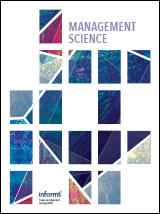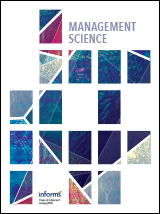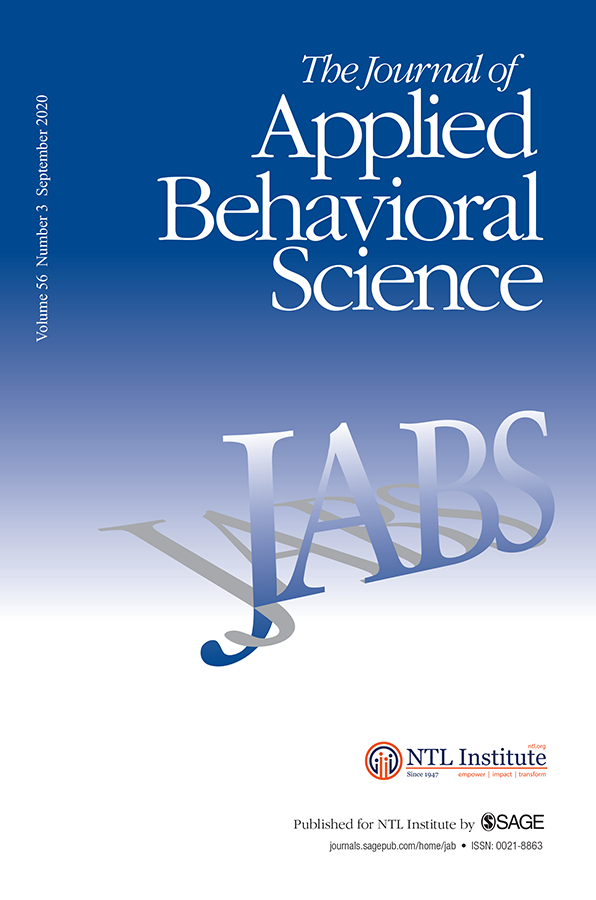Academic articles
Practitioner articles
Working papers
Books
Book chapters
Case studies
Other publications
Subject(s)
Strategy and general management; Technology, R&D management
Keyword(s)
Organizational design, new forms of organizing, remote work, all remote, virtual organizations, COVID-19
GitLab is a software company that works “all remote” at the scale of more than 1000 employees located in more than 60 countries. GitLab has no physical office and its employees can work from anywhere they choose. Any step of the organizational life of a GitLab employee (e.g., hiring, onboarding and firing) is performed remotely, except for a yearly companywide gathering. GitLab strongly relies on asynchronous coordination, allowing employees to work anytime they want. After highlighting some of the main practices implemented by GitLab to effectively work all remotely and asynchronously, I asked renowned organizational scientists their thoughts on this interesting case and to question the generalizability of the all remote asynchronous model. Understanding whether and under what conditions this model can succeed can be of guidance for organizational designers that are now considering different remote models in response of the COVID-19 shock and its aftermath.
Volume
9
ISSN (Online)
2245-408X
Subject(s)
Health and environment; Management sciences, decision sciences and quantitative methods
Keyword(s)
Information design, Bayesian persuasion game, dynamic programming, statistical decision, global health, disaster management
The World Health Organization seeks effective ways to alert its member states about global pandemics. Motivated by this challenge, we study a public agency’s problem of designing warning policies to mitigate potential disasters that occur with advance notice. The agency privately receives early information about recurring harmful events and issues warnings to induce an uninformed stakeholder to take preemptive actions. The agency’s decision to issue a warning critically depends on its reputation, which we define as the stake- holder’s belief regarding the accuracy of the agency’s information. The agency faces then a trade-off between eliciting a proper response today and maintaining its reputation in order to elicit responses to future events.
We formulate this problem as a dynamic Bayesian persuasion game, which we solve in closed form. We find that the agency sometimes strategically misrepresents its advance information about a current threat in order to cultivate its future reputation. When its reputation is sufficiently low, the agency downplays the risk and actually downplays more as its reputation improves. By contrast, when its reputation is high, the agency sometimes exaggerates the threat and exaggerates more as its reputation deteriorates. Only when its reputation is moderate does the agency send warning messages that fully disclose its private information.
Our study suggests a plausible and novel rationale for some of the false alarms or omissions observed in practice. We further test the robustness of our findings to imperfect advance information, disasters without advance notice, and heterogeneous receivers.
We formulate this problem as a dynamic Bayesian persuasion game, which we solve in closed form. We find that the agency sometimes strategically misrepresents its advance information about a current threat in order to cultivate its future reputation. When its reputation is sufficiently low, the agency downplays the risk and actually downplays more as its reputation improves. By contrast, when its reputation is high, the agency sometimes exaggerates the threat and exaggerates more as its reputation deteriorates. Only when its reputation is moderate does the agency send warning messages that fully disclose its private information.
Our study suggests a plausible and novel rationale for some of the false alarms or omissions observed in practice. We further test the robustness of our findings to imperfect advance information, disasters without advance notice, and heterogeneous receivers.
Copyright © 2020, INFORMS
Volume
66
Journal Pages
4359–4919
ISSN (Online)
1526-5501
ISSN (Print)
0025–1909
Subject(s)
Ethics and social responsibility
Keyword(s)
Impact valuation, impact assessment, corporate sustainability performance, Sustainable Business Value, SBV model
JEL Code(s)
M14
How can a company commit to maximizing stakeholder value while maintaining financial performance? Companies increasingly have the ambition to provide stakeholder value to their owners and shareholders, employees, consumers, suppliers, partners, the environment, and future generations. However, such companies often face difficulties in demonstrating the value they bring to stakeholders, due to the lack of universal methods for assessing their impact. Besides the practical need to develop a method for impact valuation, we researched the existing literature and discovered the lack of a holistic method to evaluate all impacts of a company using a common currency with flexible adaptations at different levels. We developed a new method called Sustainable Business Value (SBV) to address these gaps and enable companies to evaluate their impacts. We tested the SBV in two pilots. The SBV method differs from currently used methods, including sustainability reporting, sustainability rating and indices, and sustainability accounting. SBV can be used for decision-making, portfolio management, benchmarking, stakeholder communication, investor communication, and business development and also provides a comprehensive perspective of a company’s impact across six standardized dimensions. However, further development and standardization of proxies and cross-industry standards are needed.
Volume
12
Journal Pages
8420
ISSN (Online)
2071-1050
Subject(s)
Entrepreneurship; Technology, R&D management
Keyword(s)
Academic entrepreneurship, patenting, incentive systems, science policy, social impact
Scholarly work seeking to understand academics’ commercial activities often draws on abstract notions of the academic reward system and of the representative scientist. Few scholars have examined whether and how scientists’ motives to engage in commercial activities differ across fields. Similarly, efforts to understand academics’ choices have focused on three self-interested motives – recognition, challenge, and money – ignoring the potential role of the desire to have an impact on others. Using panel data for a national sample of over 2,000 academics employed at U.S. institutions, we examine how the four motives are related to commercial activity, measured by patenting. We find that all four motives are correlated with patenting, but these relationships differ systematically between the life sciences, physical sciences, and engineering. These field differences are consistent with differences across fields in the rewards from commercial activities, as well as in the degree of overlap between traditional and commercializable research, which affects the opportunity costs of time spent away from “traditional” work. We discuss potential implications for policy makers, administrators, and managers as well as for future research on the scientific enterprise.
© 2020, INFORMS
Volume
66
Journal Pages
4108–4117
ISSN (Online)
1526-5501
ISSN (Print)
0025–1909
Subject(s)
Entrepreneurship; Marketing; Strategy and general management
Volume
4
Journal Pages
100–120
ISSN (Online)
2511-8676
ISSN (Print)
2511-8676
Subject(s)
Information technology and systems
Keyword(s)
International law, cybersecurity, cyberattacks, attribution, necessity, rule of law, special emergency regime
The article deals with necessity as one of the circumstances precluding wrongfulness under customary international law and how it will likely gain relevance in view of the difficulty to quickly attribute malicious cyber operations that threaten important assets of a state. While the necessity doctrine seems fit for purpose, it lacks granularity and is problematic from an international rule-of-law point of view. Taking these pitfalls into account, the article proposes some general principles for a possible special emergency regime for cyberspace.
Volume
80
Journal Pages
433–452
Subject(s)
Economics, politics and business environment; Human resources management/organizational behavior; Management sciences, decision sciences and quantitative methods; Technology, R&D management
Keyword(s)
Team production, knowledge work, interdisciplinary research, collaboration, division of Labor
Teams performing scientific research are becoming increasingly large and interdisciplinary. While prior work has examined antecedents and performance implications of these trends, it is not clear how team size and interdisciplinarity relate to teams’ internal organization, especially the division of labor (DoL) between members. We first develop an organizing framework that integrates three complementary dimensions of DoL: (1) the specialization of individual team members, (2) the distribution of activities across team members, and (3) interdependencies between activities. We then discuss how these aspects of DoL are related to team size and interdisciplinarity and test our hypotheses using author contribution data from over 12,000 scientific articles. We find that team size has a positive relationship with an aggregate measure of DoL, but disaggregated measures show that this relationship holds for some aspects of DoL and not others. We also find that interdisciplinary teams use greater division of labor, although this effect depends on the degree to which interdisciplinarity is intra- versus inter-personal. We conclude by discussing how our conceptual and empirical toolkit may be applied in future research on the drivers and consequences of division of labor in teams.
With permission of Elsevier
Volume
49
Journal Pages
103987
Subject(s)
Management sciences, decision sciences and quantitative methods; Marketing; Strategy and general management
Keyword(s)
Coronavirus, COVID-19, industrial purchasing, national culture, Hofstede
With the onset of the 2020 coronavirus pandemic, industrial suppliers are increasingly challenged to close their open sales opportunities and keep generating business. Against this backdrop, the authors of this study investigate which offerings industrial customers are most likely to purchase as the pandemic progresses. Drawing on positive decision theory and empirically investigating 31,353 sales opportunities across 57 countries, the authors show that the coronavirus pandemic significantly decreases industrial customers' purchase probability, especially for high-priced offerings. In countries with low uncertainty avoidance and strong long-term orientation (e.g., China, India, Singapore), purchase probability is less affected by the pandemic. The coronavirus pandemic even increases purchase probability for offerings with low prices in countries where cultures are simultaneously uncertainty-avoidant and short-term oriented (e.g., Argentina, Brazil, Mexico). This is presumably because customers safeguard their operations in the face of impending supply shortages. Consequently, this helps suppliers focus on the right sales opportunities to secure their business during exogenous global shocks such as the coronavirus pandemic.
With permission of Elsevier
Volume
88
Journal Pages
195–205
Subject(s)
Human resources management/organizational behavior
Keyword(s)
Paradox, individual ambidexterity, exploration, exploitation
Following the turn to practice in organization theory and the emerging interest in the microfoundations of ambidexterity, understanding the role of individuals in realizing ambidexterity approaches becomes crucial. Drawing insights from Greek philosophy on paradoxes, and practice theory on paradoxes and ambidexterity, we propose a view of individual ambidexterity grounded in paradoxical practices. Existing conceptualizations of ambidexterity are largely based on separation strategies. Contrary to this perspective, we argue that individual ambidexterity can be accomplished via paradoxical practices that renegotiate or transcend boundaries of exploration and exploitation. We identify three such paradoxical practices at the individual level that can advance understanding of ambidexterity: engaging in “hybrid tasks,” capitalizing cumulatively on previous learning, and adopting a mindset of seeking synergies between the competing demands of exploration and exploitation.
With permission of SAGE Publishing
Volume
56
Journal Pages
143–165
ISSN (Online)
1552-6879
Subject(s)
Health and environment; Human resources management/organizational behavior; Technology, R&D management
Keyword(s)
Citizen science, crowd science, co-design, sustainability transitions, science and innovation studies, science education
Citizen Science (CS) projects involve members of the general public as active participants in research. While some advocates hope that CS can increase scientific knowledge production (“productivity view”), others emphasize that it may bridge a perceived gap between science and the broader society (“democratization view”). We discuss how an integration of both views can allow Citizen Science to support complex sustainability transitions in areas such as renewable energy, public health, or environmental conservation. We first identify three pathways through which such impacts can occur: (1) Problem identification and agenda setting; (2) Resource mobilization; and (3) Facilitating socio-technical co-evolution. To realize this potential, however, CS needs to address important challenges that emerge especially in the context of sustainability transitions: Increasing the diversity, level, and intensity of participation; addressing the social as well as technical nature of sustainability problems; and reducing tensions between CS and the traditional institution of academic science. Grounded in a review of academic literature and policy reports as well as a broad range of case examples, this article contributes to scholarship on science, innovation, and sustainability transitions. We also offer insights for actors involved in initiating or institutionalizing Citizen Science efforts, including project organizers, funding agencies, and policy makers.
With permission of Elsevier
Volume
49
Journal Pages
103978



